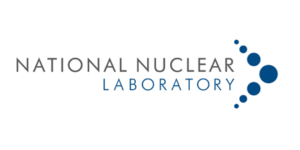
(B.1) Development of the understanding of the migration of radioactive and chemotoxic contaminants from buried concrete structures or land contamination is a fundamental research topic. This understanding would support broader environmental system understanding for compliance, stewardship, and closure activities. Key physico-chemical processes of relevance to the UK nuclear operators research interest include aspects of mechanisms of mobilisation of contaminants into the environment such as diffusion & desorption, and the generation of modelling and assessment tools to support the production of more robust environmental safety cases. This research theme extends to the development of effective characterisation methods of such physico-chemical properties and may consider aspects of concrete aging or existing aged disposal systems.
(B.2) The communication of assessment uncertainties to stakeholders (mainly the general public) remains crucial for succeeding in the decision-making process (in alignment with the NDA Value Framework) required to close sites. The development of effective stakeholder engagement tools related to the acceptability of the long-term safety of radioactive waste disposal and management of contaminated land in situ is an essential research area. This theme focuses on the perception and comparison of uncertainties from different activities. Key challenges include but are not limited to assessment of variability, the combination of uncertainties, or the complexity in picturing very low probability events.
(B.3) The management of the accumulative uncertainty is fundamental to a good decision-making process. Nuclear industry may be affected by over-conservatism in decision making, generated by a compounding effect. Approaches and tools to better quantify the uncertainties on human health impacts in environmental assessments are currently to be improved to drive better decision-making. Areas of specific interest are:
- Uncertainties for longer-term assessments (millennial timescales).
- Quantification of inter-play between correlated and uncorrelated uncertainty contribution.
- Mapping of time evolution of the uncertainty contribution.
- Improved approaches to address the sampling strategy conundrum.
(B.4) The expansion of the performance envelope of sampling equipment and analytical instruments to address the radioactive contaminants found at nuclear sites, and to allow characterisation of groundwater conditions. Areas of interest are, but not limited to:
- Novel instrumentation or techniques.
- In situ, higher frequency monitoring.
- Difficult-to-detect radionuclides.
(B.5) Novel investigation techniques for radioactive discharge pipelines from nuclear sites are of interest, including:
- Methods for determination and application of fingerprints (using easily measured gamma emitters and the relationships between radionuclides of interest and easily measurable physical parameters (pH, Eh, etc.)) to determine the presence of and quantify more ‘difficult to detect’ radionuclides.
- Innovative remotely operated vehicle designs to characterise pipelines.
(B.6) The application of machine learning and/or artificial intelligence is essential to improve support and advance work. Their application has potential for freeing human resources from repetitive tasks, supporting humans in decision-making, and offers enhanced data interpretation. Areas of interest are:
- Applications of machine learning and/or artificial intelligence to novel sensors and robotics for the characterisation and monitoring of radioactively contaminated land and groundwater.
- Deployment of natural language processing (NLP) for capturing information from historical records.
- Use of machine learning methods to review historical laboratory analytical information to understand the presence of contaminants of currently unknown concern.
- Automatic generation and checking for consistency of safety case documents.
- Use of reality-capture techniques to digitise environmental features specifically related to land quality and historical land features.
- Construction of metadata for existing dataset.
For projects relating to applications of artificial intelligence, please refer to and consider the sub-section at the end of this document when applying to the call.
(B.7) The development of innovative techniques for groundwater remediation or the remediation of radioactively contaminated land is of interest. In particular, research should address issues arising from long-term consequences of remediation which may have an impact upon sustainability and our responsibilities to future generations. Areas of interest are, but not limited to:
- Deployment of biotechnology to groundwater and land remediation.
- Deployment of techniques relying on chemical remediation.
- Effects of climate evolution on the success of the remediation activity.
(B.8) Research to develop the understanding of the fate of radioactive particles in the environment:
- Numerical modelling of the transport and dispersion of radioactive particles in the marine environment.
- Analysis and simulation of the degradation mechanisms affecting a range of radioactive particle types in the marine environment.
- Understanding the fate and characterisation of land contamination in the biosphere.
(B.9) Research to develop understanding of local landscape evolution and climate change over the multi-millennial time scales. This includes, but it is not limited to, the numerical modelling of the evolution of the coastline in the context of high-resilience bedrock.
To apply for the scheme, please click here.

